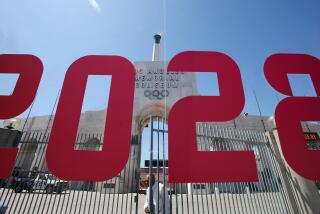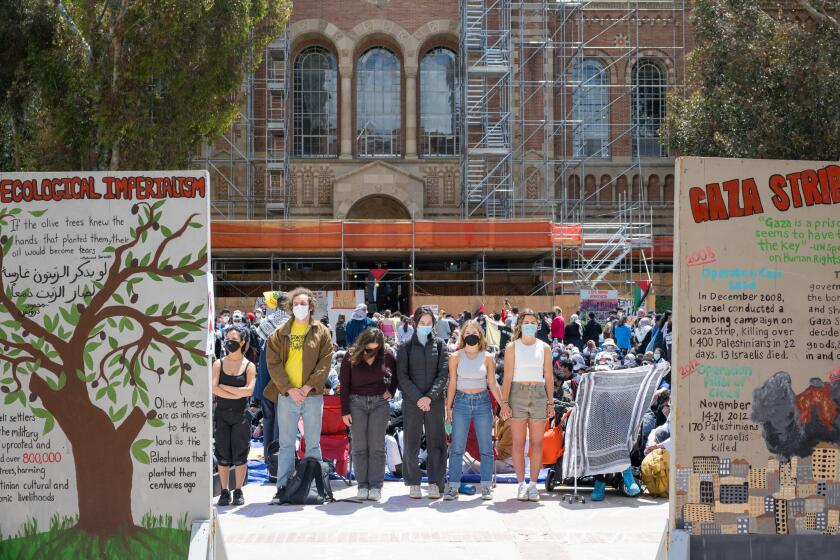Opinion: Will L.A.’s Olympic ambitions hurt or help the river restoration?
City analysts raised concerns this week that Los Angeles’ bid to host the 2024 Summer Olympics underestimated the cost of building an Olympic village along the Los Angeles River to lodge 17,000 athletes.
The bid put a $1-billion price tag on the village, a complex of apartments, dining areas, offices, medical facilities, parking lots and open space. It would be a public-private partnership and the apartments would be offered as market-rate and affordable housing after the Games.
However, the village would be built on a 125-acre railroad yard in Lincoln Heights called Piggyback Yard and the owner, Union Pacific Corp., has been called an unwilling seller in the past. The company currently has “no plans or desire to vacate the site,” City Administrative Officer Miguel Santana and Chief Legislative Analyst Sharon Tso wrote in a report to the City Council.
Convincing Union Pacific to sell the site might take a lot more money and time than Olympics proponents are willing to admit.
But there’s another reason to be cautious of the bid book’s vision. Piggyback Yard is considered one of the critical pieces of the Los Angeles River revitalization. The site is a rare, large swath of riverfront property that offers an unparalleled opportunity to restore the river ecology and create a public space that could be L.A.’s Central Park. Environmentalists and Mayor Eric Garcetti lobbied hard for the U.S. Army Corps of Engineers to adopt a more ambitious river restoration plan that included Piggyback Yard.
And now the biggest gem in the so-called Emerald Necklace vision for the L.A. River is being eyed for an Olympic overhaul.
So, is the Olympic bid hijacking the river revitalization plan? Taking a critical piece of the ambitious restoration vision and turning it into a developer’s dream?
Or is the Olympic plan the ideal answer to the question of how to pay for the river transformation, which is projected to cost $1.3 billion. The federal government wants the city to cover most of the expense. The Olympics bring private dollars that could jump start the Piggyback Yard acquisition and the larger project. But would the city and river advocates have to sacrifice their vision for Piggyback Yard?
So far, there hasn’t been much discussion of what the construction of an Olympic village could mean for the L.A. River plans — or when the public could weigh in. That should be part of the conversation, sooner rather than later.
For more opinions, follow me @kerrycavan
More to Read
A cure for the common opinion
Get thought-provoking perspectives with our weekly newsletter.
You may occasionally receive promotional content from the Los Angeles Times.







